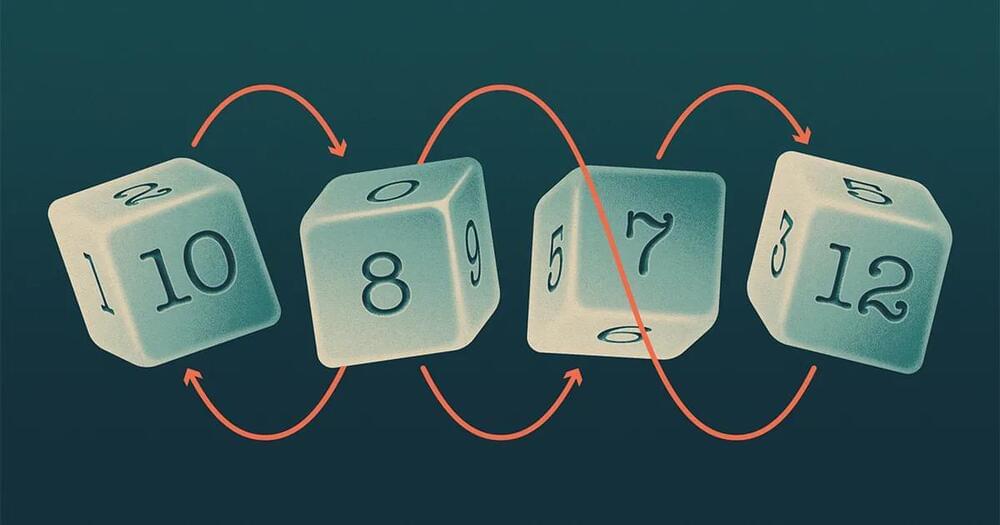Mathematicians came up with the first examples of intransitive dice more than 50 years ago, and eventually proved that as you consider dice with more and more sides, it’s possible to create intransitive cycles of any length. What mathematicians didn’t know until recently was how common intransitive dice are. Do you have to contrive such examples carefully, or can you pick dice randomly and have a good shot at finding an intransitive set?
Looking at three dice, if you know that A beats B and B beats C, that seems like evidence that A is the strongest; situations where C beats A should be rare. And indeed, if the numbers on the dice are allowed to add up to different totals, then mathematicians believe that this intuition holds true.
But a paper posted online late last year shows that in another natural setting, this intuition fails spectacularly. Suppose you require that your dice use only the numbers that appear on a regular die and have the same total as a regular die. Then, the paper showed, if A beats B and B beats C, A and C have essentially equal chances of prevailing against each other.
